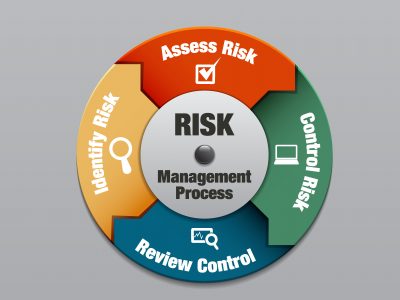In today’s world if employees feel the toxicity at the workplace they will be leaving it and going for some other job and such steps by employees will influence the growth and in the worst-case scenario result in a downfall of the start-up.
According to the BLS, the average employee has been at their current company for 4.2 years. That statistic declines to 2.8 years when looking at a millennial demographic, the largest generation in the workforce.
This means employees aren’t afraid to jump ship when faced with a toxic workplace—and if it’s your high performers jumping ship, you’re in trouble.
Management should make sure they are providing a source of constant motivation to the employees as many times employees have to work on projects that they might not find exciting! If the practice of motivating employees is followed correctly, this will lead to the success of the startup and massive learning for the employees. Eventually, the training will not only help the startup stay resilient in adverse situations but also will increase employee satisfaction.
Along with motivation, making the environment calm and comfortable for all to work together especially in rough periods is a crucial role played by the management team. As we all know that businesses keep changing as per the needs and acceptability of the customers and the business world, and nowadays it is quite frequently happening. These scenarios may give a feeling of uncertainty, dilemma, and frustration among teams – which will be an extremely tough job for management to deal with. Therefore, a toxic work environment risk assessment should be undertaken to make sure your employees don’t feel toxic while causing harm to their mental and physical well-being.
At the same time, management must be working on bridging the skills gap which means, staying up-to-date on the latest trends, knowledge, and skills, which is faced as a big challenge for management. At present, skills take no time to be outdated, and acquiring new skills by the employees comes as a tough challenge for management.
- Being poor at execution of the business model
The execution of the business model executive summary is totally in the hands of the management team. What does the execution of a business model mean? It means to make the business model a reality.
One of the most common causes of failure in the startup world is that entrepreneurs are too optimistic and confident about acquiring customers because of their business model assuming that having an interesting website, the product is enough to attract customers. That may happen with the first few customers, but not for a long-term goal. Hence, it becomes a difficult and expensive task to attract and win customers, and in many cases, the cost of acquiring the customer (CAC) is higher than the lifetime value of that customer (LTV).
The aim is to acquire your customers for less money than they will generate in value of the lifetime of your relationship with them is stunningly obvious. Still, it is found that the majority of the management team of startups are not able to figure out a realistic cost of customer acquisition.
A business model is considered almost successful when it can answer these two questions in a positive sense.
- Is there any scalable way to acquire customers?
- Is it possible to monetize the customers at a higher level than your cost of acquisition?
An example of Doctalk explains it well,
Doctalk was founded in 2016 by Krishna Chaitanya Aluru, Akshat Goenka, and Vamsee Chamakura. The app connects doctors with patients across India. Through it, patients can find good doctors in the nearby area and after one in-person visit, the patient was able to be connected with the doctor through the app for any further queries and consultations. The patients needed to pay a subscription fee, whereas the doctors were charged an initiation fee.
In 2018, Doctalk pivoted to a new business model in which it made an electronic medical record (EMR) solution to help doctors write digital prescriptions on customized prescription templates. It was launched by the name ‘Pulse’ and was sold to the doctors as a tool to digitalize the entire consultation and share it with patients as well.
Reason for failure: The pivot was taken by the company from its initial business model to a new business model that was to digitalize the complete process was not that successful. Hence it leads to the failure of the company.
Another example would be Koinex –
In August, Koinex was founded by Rakesh Yadav, Rahul Raj, and Aditya Naik. It was so successful that it already established itself as India’s largest cryptocurrency exchange. It has a user base of over 1 million, and it claimed to have a trading volume of over $3 billion and has successful execution of 20 million+ orders.
Reason for failure: On 27th June 2019, it suspended its services. This was because of instability in the cryptocurrency trading business in India. The founders gave a statement that due to a lack of clear view of the lack of regulatory framework for cryptocurrencies in India, it prevented Koinex to run smoothly.
In solutions to all the above problems I want to add that, it is extremely necessary to have
- A proper market research
- Customers interest research can be done by taking surveys and then working on the business model
- Creating an amazing work environment by motivating and giving that much comfort to employees, so they can approach the management team for any query.
- Hiring and teamwork are crucial factors so it is important that if in case the wrong candidate is hired, management should be bold enough to fire those who are not compatible enough to work in a team with the required aim of the company for the long run.
In conclusion, I think management is a key to success for any startup and to be there in the competition for the long run. Hence the management team should be selected crucially and its work capacity should always be increased and should be more up to date with the present skill sets and trends. In addition, a powerful risk management process in terms of crisis can aid the startup to achieve heights in the future and will come out to be a role model for many other entrepreneurs, who wish to form a company in the distant future.
Reference:
https://www.forbes.com/sites/neilpatel/2015/01/16/90-of-startups-will-fail-heres-what-you-need-to-k now-about-the-10/?sh=236253396679
https://www.entrepreneur.com/article/244730
https://www.perkbox.com/uk/platform/recognition/management-challenges-and-how-to-overcome-them https://hbr.org/2019/12/why-your-startup-wont-last
https://www.predictiveindex.com/blog/toxic-work-environments-15-signs-of-workplace-toxicity/ https://startuptalky.com/why-startups-fail-case-study/#failed_indian_strtups_Doctalk https://neilpatel.com/blog/build-team-wont-sink-startup/
Submitted By: Kanchan Rathore, Member of Student Risk Club (SRC)














